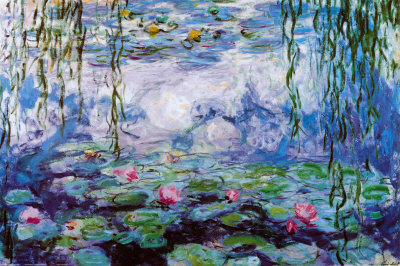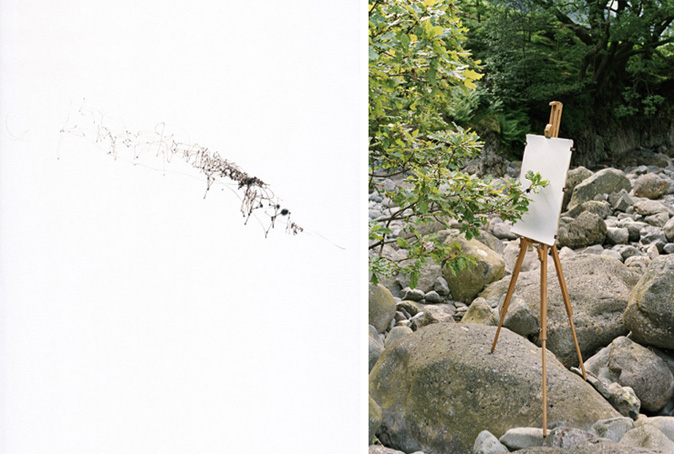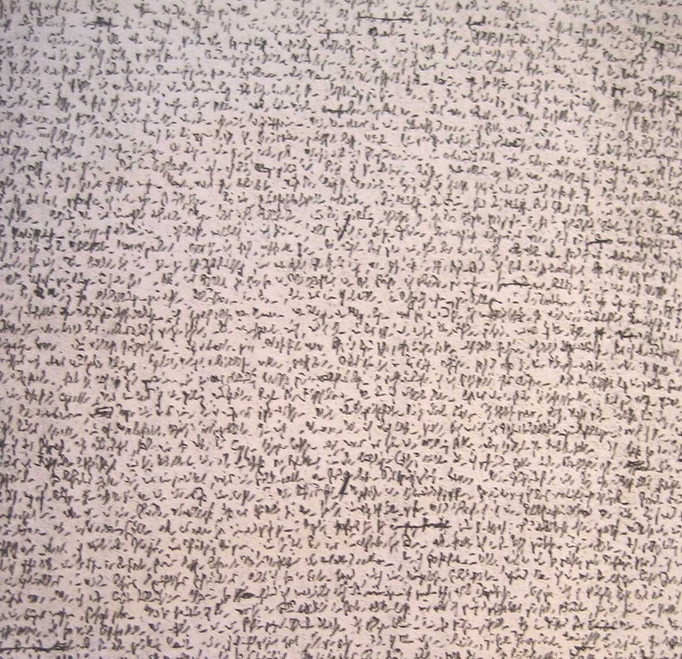Author Spotlight
Who made who?

 The “art as nature” vs. “nature as art” quandary may not be something we’ll solve today, which is fine, though artist Tim Knowles seems a little closer to the answer, or at least more keen on being the provocateur of such disparity. Is it harmony in entropy, or just taping pens to trees in a some sublime post-MFA bong hit? I don’t know, but I was immediately reminded of Monet’s waterlilies, whose tendrils of weeping willows seem to dance the surface of water in some attempt at recording their presence. Modernism was far less self-conscious, so we’ll leave it to Knowles to beg the question: What if trees, inherent with nature from soil up, were given the chance to flay their mark upon a most glorious human enterprise? What if the tireless human transcript of culture were merely incidental, just some random wind?
The “art as nature” vs. “nature as art” quandary may not be something we’ll solve today, which is fine, though artist Tim Knowles seems a little closer to the answer, or at least more keen on being the provocateur of such disparity. Is it harmony in entropy, or just taping pens to trees in a some sublime post-MFA bong hit? I don’t know, but I was immediately reminded of Monet’s waterlilies, whose tendrils of weeping willows seem to dance the surface of water in some attempt at recording their presence. Modernism was far less self-conscious, so we’ll leave it to Knowles to beg the question: What if trees, inherent with nature from soil up, were given the chance to flay their mark upon a most glorious human enterprise? What if the tireless human transcript of culture were merely incidental, just some random wind?

"Oak on Easle #1" Tim Knowles
Postmodern hahas aside, the human hand is imperative to its most essential discourse, not the abstract flourishes and/or accidents of a tree’s branch or abstract expressionism, but of writing. The pen seeks the paper, and while any post-structuralist will tell you a letter is mere squiggle, there’s something mindful of words on a page, which leads me to Robert Walser’s “microscripts,” tiny invented German shorthand sprawling over pages and pages. In this eager world of publishing, one wonders about a man who would encode his words, making them almost undecipherable. If the hand of God is wind through the trees, then the hand of man is bent and contracted. Some say the former is the fictitious subject of the latter; some say it’s the other way around. I say just look:

Virginia Woolf said “Nothing has really happened until it has been recorded,” perhaps an evocation of her and her husband’s Hogarth Press. She also said “We are nauseated by the sight of trivial personalities decomposing in the eternity of print,” and we’ll assume she wasn’t referring to her authors. Art seems to implicate eternity, though sometimes by the lack of it. Going back to Knowles: If a tree makes a mark and there is no canvas to record it, does it make a mark? If an obscure writer dies without posthumous luck, did he ever live? And if a silly blogger writes a post and doesn’t hit “publish,” does this make a sound? If only I were that modest.
Tags: Robert Walser, Tim Knowles

Holy woah damn, this is awesome Jimmy. Thanks for this.
Holy woah damn, this is awesome Jimmy. Thanks for this.
You might like Dorothy Robinson’s work.
Just came across this interview: http://thelaurenbraun.blogspot.com/2010/02/spotlight-ondorothy-robinson.html
Here’s a gallery of her oil paintings: http://www.purdinky.com/artist.php?aID=1&iT=1
Fragmented, constantly changing landscapes that mirror the human condition.
You might like Dorothy Robinson’s work.
Just came across this interview: http://thelaurenbraun.blogspot.com/2010/02/spotlight-ondorothy-robinson.html
Here’s a gallery of her oil paintings: http://www.purdinky.com/artist.php?aID=1&iT=1
Fragmented, constantly changing landscapes that mirror the human condition.
This is beautiful! Thank you for sharing
This is beautiful! Thank you for sharing
Heh, that’s my microscript photo! Enjoyed your observations …
BTW, from what I read in the intro to a new collection of translations from the microscripts, Walser’s script was not an invented shorthand after all, but rather just a miniatured version of a German script called Kurrent, which was the favored script for handwriting in German-speaking countries until the mid-20th century. Walser’s translator Bernofsky describes it as “medieval in its origins, all up-and-down slanting angles.”
Here’s what the Kurrent alphabet looked like (via Wikipedia: http://en.wikipedia.org/wiki/File:Deutsche_Kurrentschrift.jpg
Heh, that’s my microscript photo! Enjoyed your observations …
BTW, from what I read in the intro to a new collection of translations from the microscripts, Walser’s script was not an invented shorthand after all, but rather just a miniatured version of a German script called Kurrent, which was the favored script for handwriting in German-speaking countries until the mid-20th century. Walser’s translator Bernofsky describes it as “medieval in its origins, all up-and-down slanting angles.”
Here’s what the Kurrent alphabet looked like (via Wikipedia: http://en.wikipedia.org/wiki/File:Deutsche_Kurrentschrift.jpg